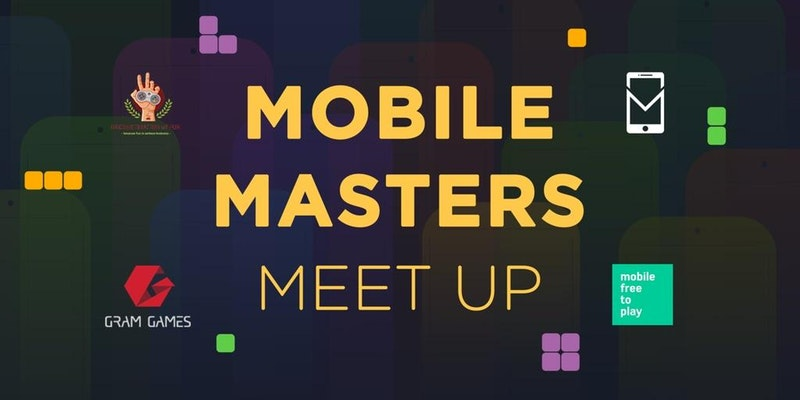At GDC 2018, I had the pleasure of co-presenting a Deconstructor of Fun talk, which Anil Das-Gupta and I deconstructed two top mobile games. I broke down Golf Clash, and Anil broke down Rules of Survival.
Watch it on GDC Vault
For Golf Clash, the main takeaways were:
- Golf Clash was the most successful follow up to Clash Royale because it focused on a fundamentally different audience
- Most rivals focused on gameplay, IP or theme, but golf clash went for a completely different audience
- A blue ocean strategy that paid off. At that point there were no other golf games on the market that could retain and monetize as well as the Clash Royale system.
- Golf Clash got this Hybrid to work because:
- Key #1: Balance between Luck and Skill
- Clash Royale works because the core gameplay is actually very skill driven, yet the stats that you can upgrade are still very visible and desirable
- Golf Clash was a great fit for this because of the nature of golf — having multiple clubs for different situations gives plenty of reasons to keep all clubs upgraded
- Ultimately Golf Clash is a skill-driven game by feeling. You’re commonly leaving a match you lost feeling like you could’ve played better, not that your stats weren’t strong enough
- Key #2: Strong implementation of the Gacha system
- Golf Clash’s lower number of clubs meant that they needed to adjust the balance to ensure enough duplicates were happening for progression
- They also needed to ensure that all clubs were useful, otherwise players would end up with a bunch of drops that were useless
- They did this with level design — over time the holes become more horizontal movement over vertical movement, putting more pressure on Spin & Curl over power. (ex. While most clubs only increase by 10% in the power stat, they will double or triple their curl & spin stats)
- Key #3: Overcoming the lack of Shifting Meta
- Golf Clash isn’t a PvP game which can support a shifting meta. Both players race for the cup, but can’t influence each other. My opponents choices do not impact my own.
- As such, Golf Clash had no shifting meta, which is a key component of what makes CCGs work
- To overcome this they added in the buy-in system (from Miniclip’s 8ball pool), and put more focus on events and tournaments. This drives their revenue over the shifting meta.
Golf Clash shows us that the best way to attack the market is still to find blue oceans, and they still exist, even in this state of maturity. Translating mechanics from one audience to another is not trivial, but is clearly worth it!
It’s been a month since GDC 2018 and if you visited San Fransisco and perhaps even saw my talk live, thank you! If like most people you missed it, here are the slides and link to the GDC Vault:
Shoestring Soft Launch GDC Vault
The talk focuses on being a practical guide to preparing, running and analysing your games soft launch. Whatever the size and scale of your studio I consider a soft launch critical in the process of creating a successful product on the store. There have been so many different methods to soft launch and so much confusion that I tried to sum it up in a guide. The guide keeps it simple and light and focus’ on the maximum bang for $2000 of spend. A big focus is the idea of bursting a soft launch rather than running an always on campaign, this can save you money and keep your team focused on development rather than watching your numbers all the time. The bigger your studio the more refined your marketing and soft launch tactics might be, but hopefully there is something in there for everyone!
Outline
- Definition of a Soft Launch
- What?
- When?
- Why?
- Before you Soft Launch
- AARRR + GQM Data design
- KPI / Dashboard Setup
- Audience and Location choosing
- Running a Soft Launch
- Bursting
- Analysing
- Critical Decisions
It’s close to that time of year when everyone in the industry gets ready to take a plane halfway around the world to meet the gaming community at GDC 2018. Personally speaking, it’s one of the only times I see half of my ex-colleagues each year.
It goes without saying that GDC is a very special industry-focused event, not only because it’s the largest, but also because of the sheer density of great game designers and developers who make the trip. Without fail, each year will throw up something new – a new lesson, or a new contact who proves to be invaluable over time.

If you’ve never considered attending GDC before, I couldn’t recommend it any more strongly – it’s easily one of the best games events on the calendar, though the expense required for non-American developers to make the trip cannot be ignored. On that note, try and look into your country’s business investment initiatives, as there may be a budget to get you a ticket, flight or hotel.
For those heading to San Francisco for this year’s she-bang, both I and Adam will be giving two separate talks on topics we’re both passionate about:
GDC Talks
Speaker:
Tom Kinniburgh (Director, Mobile Free to Play)
Location: Room 2006, West Hall
Date: Thursday, March 22
Time: 4:00pm – 5:00pm
In this talk, I’ll be looking through how you can get the best data about your game for the lowest cost. Soft launching is something I believe helps every game improve, but how to do it, when to do it and the costs involve put off a large number of developers. I’ll show how, for $2000, you can get any game ready for a more successful launch on the app stores.
Speakers:
Adam Telfer (Director, MobileFreeToPlay.com)
Anil Das-Gupta (Product Owner, Wargaming.net)
Location: Room 22, North Hall
Date: Wednesday, March 21
Time: 2:00pm – 3:00pm
In this talk Adam and Anil will break down some of the top grossing games on the app store – you’ll have to wait and see which ones they both pick. Deconstructing games is what we do best. We’ll show you how the best performing games create strong core loops and through understanding, you can make better calls in your game.
Mobile Masters Meet Up – GDC 2018

We’re also throwing an invite-only party with Gram Games, MobileDevMemo and Deconstructor of fun. There are really limited spaces and we’re focussing on letting Game Designer and Product Managers in, to meet with other talented folks! Get yourselves on the waiting list and we will be inviting a few people each day.
https://www.eventbrite.co.uk/e/gdc-mobile-masters-meet-up-tickets-43356218617
Hope to see you all there!
Tips for GDC
If it’s your first time to GDC it can seem a little daunting and you can often get lost in the sheer size and scale of the place. Here are my tips.
- Reach out and book meetings early with key individuals. Give yourself 60-minute slots, but only expect to have 30-minute meetings – often traveling to various locations takes the extra time.
- When booking meetings, book around Yerba Buena Gardens or any of the bars or hotels directly next to the Moscone Centre.
- You don’t need to stay near Moscone (nor is it always the safest). You can easily stay farther away at a more affordable venue and commute using the BART or Uber/Lyft. Once you’re in, you’re then in town for the full day and night.
- Work out which talks you want to see in advance and don’t expect to be able to do more than three back to back, they do get quite tiring.
- The Expo hall is a must – make sure you see the indie game finalists.
- Parties are top priority – make sure you try to go to two or three during the week, even if you don’t yourself drink. The best resources for finding them are
- Fellowship of GDC Parties FB Group
- GDC 2018 Party Map
- Don’t party all night. It’s a full week, slow and steady wins the race.
- Bring a bag with a jacket, water, gum, notepad/iPad. The venue doesn’t have great options, and SF weather is very temperamental.
- Don’t wander alone at night. Every year someone at GDC gets into problems wandering alone, especially near the Tenderloin. Stick to groups and take Lyfts/Ubers at night to get home.
- Don’t be shy! If you loved a talk, make sure to go and meet the speaker! If you see someone you admire, talk to them! GDC brings out the best in everyone. You’ll be surprised who is there and who is willing to have a quick chat.
And remember all of the talks are on the GDC Vault after the event and we will be posting both of our slide up here if you can’t make it to GDC this year.
Good luck, and I hope to see many of you out there.
As promised, here are the slides from my talk at GDC 2017 on Evaluating Monetization Early.
GDC 2017: Monetization
A Quick Summary:
- Define Your Core Monetization
- Monetization’s root comes from a long lasting urge to progress.
- The most successful monetization mechanics come from speeding up pacing to progress. So adding and tightening pacing systems is the key to improving monetization opportunities.
- Pacing systems which can be monetized on usually come in 4 forms: Time, Stats, Currencies and Luck. Find where in your core loop you can add additional pacing systems which make natural sense.
- Ensure your game can scale for years
- To be in the top grossing you need games which take years to progress, and can withstand tens of thousands of dollars of spending
- Watch out for red flags in your prototype that it won’t scale:
- Map out a vision of your progress over years. Do you think it will be enough?
- Do the mechanics break? How large is your scope of stat upgrades?
- Do the sessions break? In the mid and end game, are you asking too much of your players?
- Does your Content scale? Can you effectively produce enough content to retain top players?
- Does your Economy scale? Does your tight currencies remain valuable?
- Design & Tighten Triggers for spending
- Record down for your game the various trigger points you see players spending. Can you add more? How can you tighten these reasons?
- Triggers Usually come in the form of these 6 forms:
- Loss Aversion: Protecting what players believe they’ve earned
- Vanity: Showing off to other players in the game
- Competitiveness: Wanting to dominate the game or other players
- Impatience: Wanting to make progress quickly
- Investment: Investing a small amount early which reaps greater rewards in the future
- Social: Spending for the benefit of others
- Which of these triggers does your game have? How do you tighten these?
- Prototype with Monetization & Pacing
- Prototype with your pacing & monetization included to avoid misleading fun early in prototyping
Thanks for all that attended, and I hope this is useful for everyone!
In August I spoke at GDC Europe in Köln about the independent team structure at Wooga. Not everyone knows this, but at Wooga, each team has the final say on all decisions regarding their project. The CEO & Management cannot tell the team what to work on. The team decides on everything including what technology to use, what genre to go after, and how to execute on it.
This talk is about the challenges and benefits of working with this structure for the last 3 years. Its a structure that gives full creative control to teams, but also the full burden of responsibility.

GDC Vault Video: http://gdcvault.com/play/1022756/Saying-No-to-the-CEO
Slides on Slideshare: http://www.slideshare.net/AdamTelfer/gdc-europe-2015-saying-no-to-the-ceo
Slides for download : AdamTelfer_GDCEurope2015_SayingNoToTheCEO
Recently I spoke at GDC 2015 in San Francisco with my colleague Sebastian Nußbaum. We conducted a talk called “In it for the long haul: How Wooga boosts long term retention”. We were both amazed by the response. The GDC feedback was extremely positive: we ranked #1 of all F2P talks in the GDC Summits.

To view the video of the presentation, you will need GDC Vault Access. You can view it here. The slides of the presentation can be visible here.
We discussed the importance and difficulty of delivering strong long term retention. My half of the presentation focused on creating long term retention during prototyping/pre-production, while Sebastian discussed how they delivered long term retention through Narrative design in Pearl’s Peril.
Just as a summary of my main points:
- Long Term Retention is the biggest differentiator of the Top games to the rest of the F2P market
- Long Term Retention is more important than monetization or broad audience appeal
To create long term retention:
- Create a long term goal or aspiration
- Create mechanics that encourage players to invest in the long term of the game
- Create session design that both pulls players in 6+ times per day, as well as paces players naturally in the progression
- Create social mechanics that require players to rely on others to play at their best
- Understand the cost of content production by your team vs content consumption by your consumers. This must be a healthy ratio.
To test long term retention of new concepts, during prototyping focus on creating a game that lasts for 1 month of fun.
Stop any game that doesn’t show it can scale to one month of fun. Games that struggle at this point have a dangerously low chance of figuring out long term retention during production.
I did a presentation at GDC Europe 2014 talking about “The Art of Killing Games”.
Here is the link to the full video on GDC Vault :
http://www.gdcvault.com/play/1020855/The-Art-of-Killing
I talk about my experience prototyping and designing new games at Wooga. Specifically how we evaluate new game ideas and ultimately decide whether a game is good enough to launch or not.
My Big 3 Takeaways :
- Never be afraid of stopping a game. Build a culture that embraces that failure is expected when coming up with new game designs.
- For F2P to work, you need to develop a prototype as quickly as possible that proves that it can be fun for up to a month. This is really when the “minigames” are separated from the games that actually have a chance to become a long term hit.
- You can use hard KPI goals during soft launch to quickly evaluate a games potential. You can use this method to make objective decisions about whether a game has potential to become a hit (rather than endlessly discussing subjective opinions about whether a game is good enough or not)
Hope you enjoy it.





